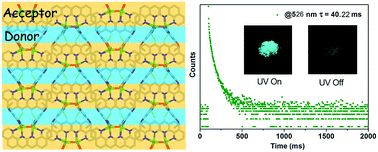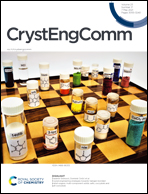Donor–acceptor structure of a coordination polymer with long-lived room temperature phosphorescence and angle-dependent polarized emission†
Abstract
A new strategy to achieve long-lived room temperature phosphorescence performance has been developed via the formation of a donor–acceptor structure in a coordination polymer, which features a lifetime (40.22 ms) three orders of magnitude higher than that of pristine phosphor. It also shows remarkable angle-dependent polarized emission.

- This article is part of the themed collection: Coordination Networks


 Please wait while we load your content...
Please wait while we load your content...